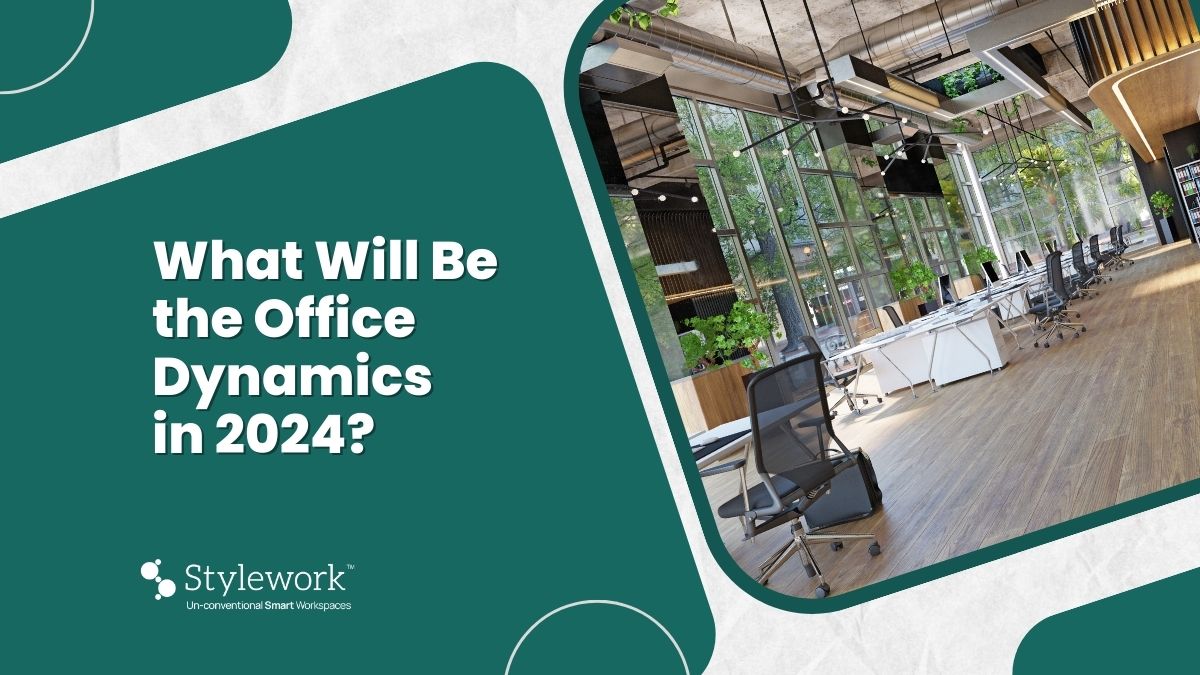If the previous year was any indication, this year will most certainly be marked by flexibility, with workspace aggregators offering efficient and flexible workspaces such as shared coworking spaces, managed workplaces, and more, in addition to focusing on hybrid work environments and giving greater significance to collaboration opportunities, improved office amenities, and reduced commutes.
As the modern workforce turns the page on 2023, the issue of office space vacancies persists, despite numerous companies implementing return-to-office mandates over the past year.
This ongoing challenge in the commercial real estate sector prompts many individuals in the workforce to ponder the future utilization of office spaces in the year 2024.
What Factors Drive People to Work at the Office?
Based on observed trends in recent years, there is a growing desire among employees for increased opportunities for personal interactions, even if conducted through digital conference tools.
The significance of these digital social interactions is expected to persist among employees, shaping the way teams will go on to collaborate in flexible coworking spaces and other flexible work environments that support the hybrid workplace model.
Apart from these interpersonal meetings, employees also have other factors that drive them to work from the office. Such as:
- Seeking a different environment
- Meeting the minimum office attendance days
- Socializing during or after work
- Enhancing focus and productivity
- Access to more reliable and better technology than at home
- Facing inadequate workspace conditions at home
And factors such as commuting costs and time, distracting or noisy office environments, accessibility challenges, insufficient public transport, superior technology, and a more conducive work environment at home discourage employees from going to the office.
Nonetheless, regardless of whether today’s workforce is inclined to return to offices, the following trends will influence the dynamics of offices in 2024:
1. Hybrid Work Model
A quick look at the reasons for and against employees going to the office makes it evident that hybrid work is set to remain the standard this year.
The decline in employee office attendance highlights the significant transformation of the present-day workforce since the widespread adoption of remote work, which gained popularity during the pandemic, although initially out of necessity.
In the ongoing discussion about returning to office, the adoption of a three-day hybrid work model will serve as a balanced compromise between employers and employees.
This trend is set to reshape the office environment, adapting to the flexible attendance patterns of the hybrid workforce. As a result, flexi workspace aggregators will go on to dominate the commercial flexible and shared coworking space market.
Also Read: How are People Moving Towards Hybrid
2. Demand for Flexibility
The demand for greater flexibility is particularly strong in the modern workforce, which is driven by a growing emphasis on achieving a better work-life balance.
Workers now highly prioritize flexible work arrangements and the freedom to work from any location and at any time.
The increasing demand for greater flexibility is expected to prompt workspace aggregators to reshape their physical office environments to adapt to the demand for flexibility.
Stylework provides a diverse selection of flexible workspaces, including hot desks, flexi desks, private cabins, and meeting rooms, as well as flexible coworking spaces, shared managed workspaces, and more.
These spaces are equipped with top-notch amenities and extra services like collaboration zones, recreational areas, cafeterias, etc. And with their fixed and multi-locational flexible workspace membership plans, you can get access to these premium workspaces across the nation.
This, therefore, allows you to choose the type of workspace that best suits your tasks and preferences on any given day.
Also Read: The Future of Coworking Space Management Software
3. Commutes Continue to Remain a Challenge
The primary factor preventing employees from returning to the office is the inconvenience of commutes, taking into account both travel expenses and time spent.
Related to physical commutes, worries about insufficient access to public transportation also significantly impact office attendance.
Hence, considering the issue, coworking workspace aggregators, like Stylework, are working towards reducing commutes by establishing spaces not only in major cities but also in Tier II and Tier III cities.
Stylework boasts an extensive network of over 2,500 flexible workspaces, including shared coworking spaces, managed workplaces, and more, equipped with best-in-class amenities nationwide. This means that you can rest assured that, regardless of your location, you’ll always have a place to work.
Also Read: Managed Office Space – New Workspace for Indian Businesses
4. Facilities and Technologies at Work
Remote and hybrid work has led employees to create personalized home offices, potentially offering better support than traditional office spaces. Exceptional IT support is no longer a luxury but a necessity in this evolving work landscape.
With the majority of the workforce operating remotely or in a hybrid workplace model, employers may find it somewhat challenging to effectively manage their employees.
This is where Styleowrk’s Flexboard—your own hybrid workplace management platform—comes into play.
This versatile platform optimizes operations, streamlining integrates with HRMS, Payroll and workspace management applications designed for flexspaces.
It’s cost-effective, promotes efficient workspace usage, and provides employee trackability, along with a real-time inventory update feature for your preferred shared coworking space.
This empowers managers with valuable insights for improving dynamic decision-making, specifically tailored for Admins, HR professionals, Real Estate Heads, Facility Heads, and decision makers.
Book A Demo

As of now, the inclination towards a hybrid work model is more than evident. This translates to offices prioritizing providing enhanced flexibility and fostering productive collaboration for the hybrid as well as the remote workforce.
Factors such as commutes, the demand for quality technology, and amenities will most certainly impact the employees’ office attendance on any given day. Adapting to these demands of modern employees will spearhead a transformation of office space designs and layouts, as well as our overall perspective of the modern workplace.

